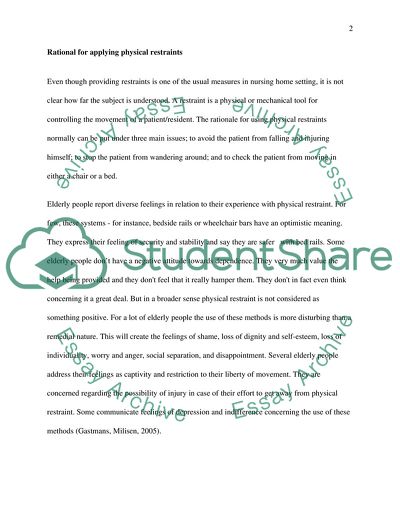Cite this document
(Nurses Attitudes towards the Use of Physical Restraints in the Elderly Article, n.d.)
Nurses Attitudes towards the Use of Physical Restraints in the Elderly Article. https://studentshare.org/nursing/1727326-nurses-attitudes-and-feelings-towards-the-use-of-physical-restraints-in-the-elderly
Nurses Attitudes towards the Use of Physical Restraints in the Elderly Article. https://studentshare.org/nursing/1727326-nurses-attitudes-and-feelings-towards-the-use-of-physical-restraints-in-the-elderly
(Nurses Attitudes towards the Use of Physical Restraints in the Elderly Article)
Nurses Attitudes towards the Use of Physical Restraints in the Elderly Article. https://studentshare.org/nursing/1727326-nurses-attitudes-and-feelings-towards-the-use-of-physical-restraints-in-the-elderly.
Nurses Attitudes towards the Use of Physical Restraints in the Elderly Article. https://studentshare.org/nursing/1727326-nurses-attitudes-and-feelings-towards-the-use-of-physical-restraints-in-the-elderly.
“Nurses Attitudes towards the Use of Physical Restraints in the Elderly Article”. https://studentshare.org/nursing/1727326-nurses-attitudes-and-feelings-towards-the-use-of-physical-restraints-in-the-elderly.


